Just Like Dad’s! Pedal Cars On Display
Reprinted with permission by the McLean County Museum of History, Bloomington, IL
by Dan Craft
The potent allures of toys and nostalgia are about to turn the third floor of the McLean County Museum of History into a garden of childhood delights. The occasion: Pedal Power!, a new and dazzlingly customized exhibit cruising into the third-floor Dolan-Behr Gallery Saturday for a two-year rally.
The bright primary colors pop … the buffed metal components gleam with a like-new sheen … and the varying designs-both true to their full-scale inspirations and fancifully imaginative-are pure-gold Americana on wheels.
All of this comes courtesy of the Bruce Callis Pedal Car Collection, a Bloomington-based assemblage that grew to 70 of the mini-vehicles collected over a 10-year stretch, beginning in 1988.
Callis was a State Farm Insurance executive and well-known community leader who died in 1999; his family has donated 53 of the pedal cars to the museum, with 48 of them on view in the new exhibit.
Pedal Power! is giving the McLean County Museum of History some very good mileage. In addition to being “true works of art,” the cars are “symbols of Americana and childhood memories for so many people. I dare anyone to leave the exhibit without finding a favorite,” says Anthony Bowman, the museum’s education outreach coordinator who curated the display.
And finding a favorite shouldn’t be too hard, thanks to the accessible way they’ve been displayed in the gallery by Bowman and designer Susan Hartzold: most of them sitting in a rows on racks described by Bowman as following a kind of “industrial-chic garage aesthetic – nothing fancy, but very nice-looking.”
Bruce Callis was already into restoring full-scale vintage cars when he ran across a 1961 Murray T-Bird pedal car while tagging along with his wife Nancy to antique shows (she had a booth in a Chenoa antique mall at the time). “His work day at State Farm was a bit hectic and long, so he enjoyed doing that as a way to spend time with her and relax,” recalls Kim.
The 1961 Murray T-Bird (Murray was a big pedal car manufacturer in the toys’ heyday*) “was identical to the one he had purchased for the children. He wasn’t really interested in a lot of antiques, but this got him going and he was happy to tag along to other shows.”
* While companies in the United States were also producing pedal cars in the 1920s and 30s, the heyday for pedal cars was between the World Wars. Pedal cars were common in retailer catalogs. Two of the biggest manufacturers were American National Automobiles of Toledo and Steelcraft of Murray, both based in Ohio. Among other products, Steelcraft made GMC pedal trucks and Mack dumptrucks, Model T Roadsters, Dodge Runabouts and a Chrysler Roadster. Pedal car manufacturer Gendron hired a young designer named Brooks Stevens, the same Stevens who later became an important car designer, to give its 1940 Pioneer Roadster a kind of streamline style. – 95Customs.com
As it grew, the collection overran his available garage room at home, ending up in a commercial storage space.
Callis also had a collection of full-sized antique cars, three of which-a 1936 Ford Roadster, a 1958 Chevy Impala convertible and a 19641/2 Mustang convertible-wound up with their pedal car counterparts.
In the years since Callis’ passing, the family has maintained the collection in that original commercial storage space. The decision eventually was made to make the collection available to the community Bruce Callis had served. “Dad was a community member who loved participating in activities. So we decided to give the collection to the community, and the museum was the logical place to share it.”
The earliest items on display are a 1927 Buick, followed by a 1929 pedal plane made of wood; the newest are from the late 1960s into the early 1970s, when the pedal car manufacturing era began to fade. Among the pedal cars with offbeat back stories is a 1950s Austin Motor Company pedal car, the Junior 40, the largest pedal car in the collection, with working lights and leather seats. “The interesting thing,” says Kim, “is that (some of) the cars were created and built in Wales** by disabled miners (afflicted with black lung disease), and this gave them a new spirit for life, and a job to do that was useful. The cars were used to teach road safety to school children.”
** The U.K.’s Lines Bros. offered its customers 30 pedal cars in its 1937/38 catalog, from the basic Prince, which was designed for 2-4-year olds, to the Electric Rolls, which had a wooden body and a 12-volt electric motor driving the rear axle. Naturally the car had working brakes and headlights, real Dunlop tires (including a spare) and chrome-plated rims. It could travel 12 to 15 miles on a single charge and had a top speed of 5 mph. By comparison, the current crop of 6-volt ride-on toys can go just 3.8 miles on a single charge having the same 5 mph top speed. The J-40 (or Junior Forty) made by Lines Bros. in Wales was modeled after the 1949 Austin A-40, probably the most popular pedal car in England. By the 1950s the company offered 33 pressed steel body pedal cars with its heavily chromed Tri-ang Centurion being the top of the line. – 95Customs.com
State Farm has further honored Callis’ legacy as a sponsor of Pedal Power! “Five of us from the family still work at State Farm, so this is all very meaningful for us,” says Kim.
For the general public, says Bowman, the exhibit will function as both the story of Callis and his collection, and its connection to State Farm, and as an overview of the manufacturing history of the pedal car, from who made them to their evolution into bonafide works of industrial design art. Above all, he adds: “Everyone loves an old car toy, and this exhibit is just a whole lot of nostalgic fun.”
Pedal Power! is on exhibit at the McLean County Museum of History through March 10, 2020. The Museum is located at 200 North Main Street in Bloomington, Illinois. For information on Museum hours and other exhibits, please visit mchistory.org. To read more about the history of pedal cars, visit www.95customs.com/a-brief-history-of-the-pedal-car.

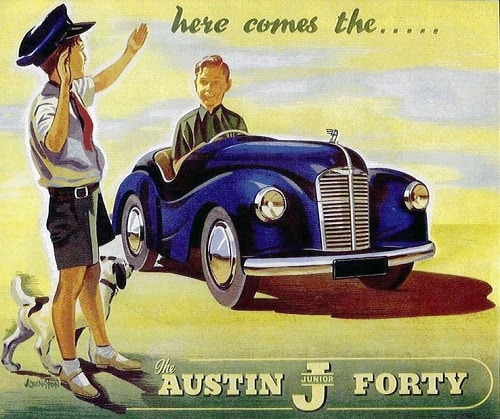
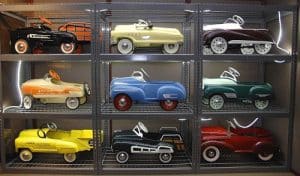
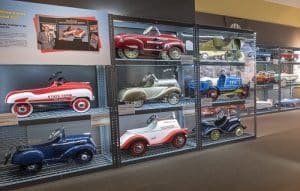
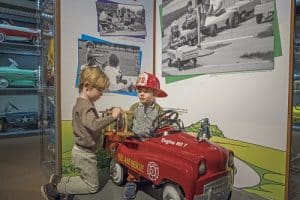
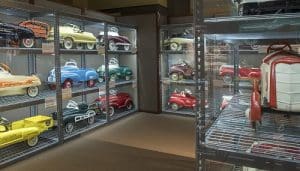
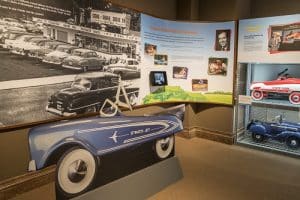
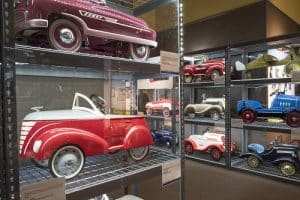





Related posts: